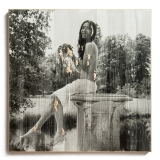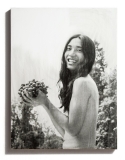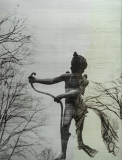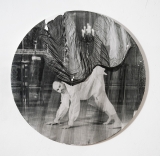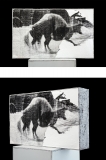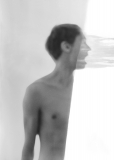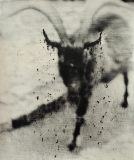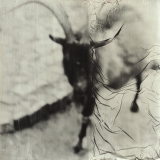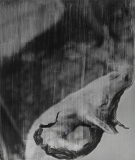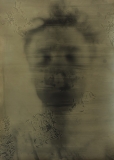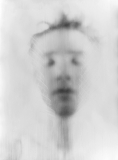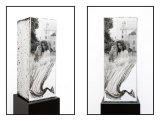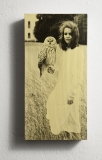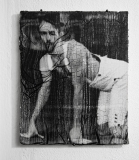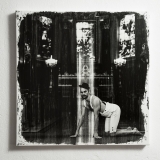Works
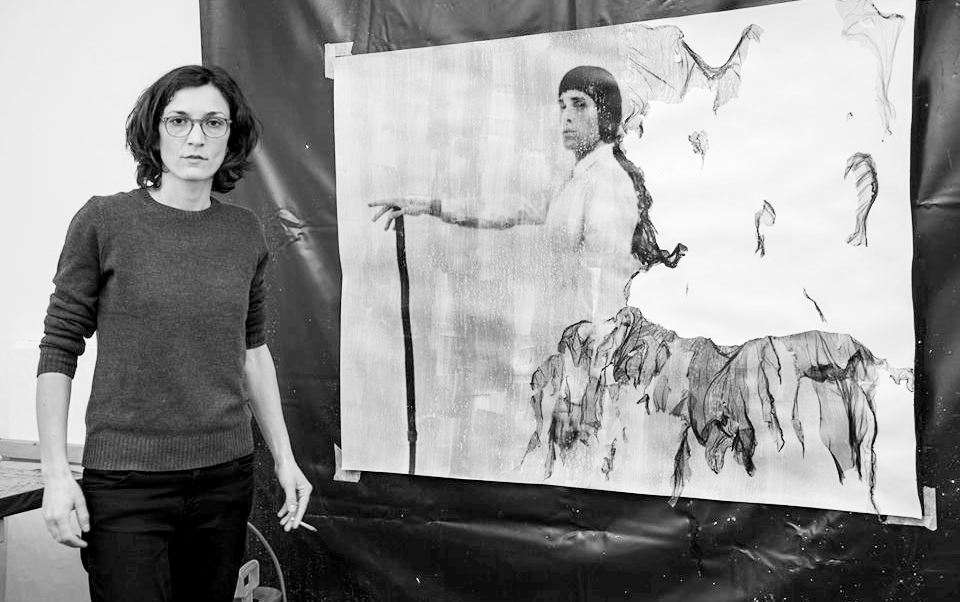
VALENTINA MURABITO: A DREAM WITHIN A DREAM
Obviously by magic, photo artist Valentina Murabito – born 1981 in Giarre/Sicilly and based in Berlin – generates grotesque, absurd and surreal motifs, printed by herself on concrete blocks, wood, steel and walls. The 16 exhibited analog photographs combine fiction and reality, ancient myths and political philosophy, art and biopolitics and are all unique.
4 April 2019 – 28 April 2019
On 4 April beginning at 7 p.m. all are invited to the opening reception at the gallery. The artist will be present.
The following works are presented in the show:
VALENTINA MURABITO: A DREAM WITHIN A DREAM
Obviously by magic, the photo artist Valentina Murabito generates grotesque, absurd and surreal motifs on concrete blocks, wood, steel and walls. The Süddeutsche Zeitung called her „Alchemist“ because she developed a new chemical process in the darkroom, creating analogue photographs of fantastic creatures like a half-girl-half-peacock or a goat with four horns, taken, inter alia, in historical places. In April, the Gallery for Contemporary Photography will give an overview of the multifaceted work of this exceptional photographer with „A Dream within a Dream“. The title refers to a poem by Edgar Allen Poe, who also abducts his readership in parallel worlds.
The new technique of being able to move and shape the surface of photography like a skin made Valentina Murabito famous. This is actually impossible, because a photograph doesn‘t dissolve — just like the skin — from the ground. The TV channel arte gives a good insight in a post, online at: „Valentina Murabito Arte“ (length: 2 min.). The 16 exhibited analog photographs are all unique and printed out by the artist by hand on watercolor and baryta paper, wood, steel and concrete blocks.
In her works, Valentina Murabito combines fiction and reality, ancient myths and political philosophy, art and biopolitics. This term was coined by the philosopher Michel Foucault and describes a policy that is increasingly invading the biological lives of people, determining that, e.g. in Germany, a handicapped child may be aborted until the 23rd week, whereas the terminally ill should not be allowed to die self-determined.
Valentina Murabito breaks with common representations, blurs the boundaries of painting and sculpture and invades photography, as does politics in biology. In Bacchante (2018), she portrays the male Greek god of wine, Bacchus, androgynous and Asian. Her deity laughs at the fact that no one knows if she is male or female. In Amore sacro e amor profano (2019) a man walks like an animal on all fours with a tiny hat and in dungarees in front of the altar of the Berlin Cathedral. „This seems ghostly, as if she had captured the summoned of spiritualist sessions — hush! — with the camera. In doing so, her analogue images are created over months in an extremely complex process, reminiscing of the pioneers of photography, such as Eadward Muybridge,“ says Jutta Czeguhn of the Süddeutsche Zeitung.
Valentina Murabito (* 1981 in Giarre/Italy) exhibited her works throughout Europe in museums such as the Klosterneuburg/Austria or the Hungarian Academy in Rome, in galleries and at art fairs. They are part of various collections, such as the Austrian collection SpallArt. Since 2009 she lives in Berlin. Currently she is still at Johanna Breede. Photokunst in Berlin and Størpunkt. Gallery for Contemporary Art in Munich. More information and press can be found on her website www.valentina-murabito.com.
